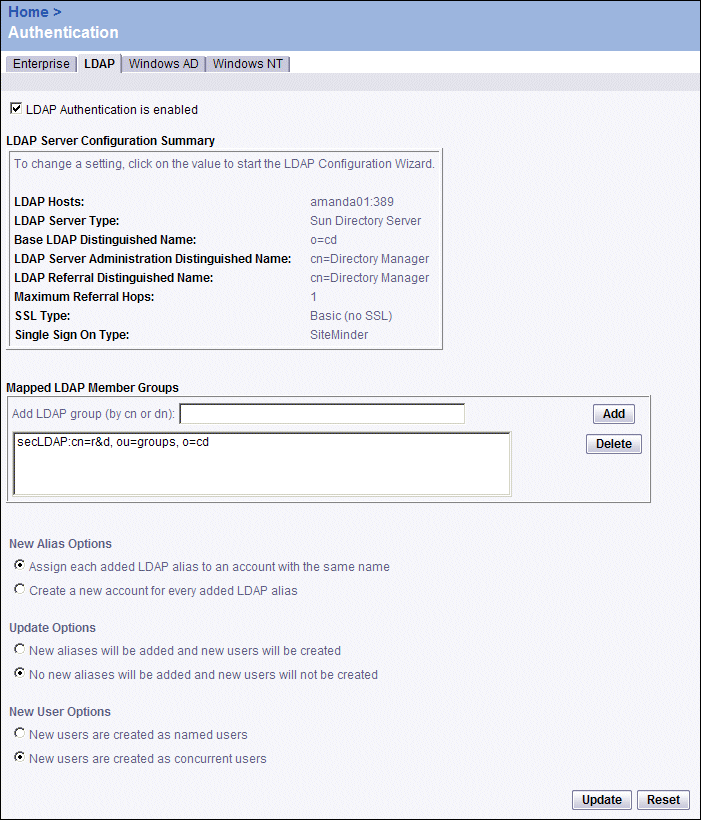If LDAP authorization is configured, the LDAP summary page appears.
You can add more than one LDAP group by repeating this step. To remove a group, highlight the LDAP group and click Delete.
- Assign each added LDAP alias to an account with the same name
Use this option when you know users have an existing Enterprise account with the same name; that is, LDAP aliases will be assigned to existing users (auto alias creation is turned on). Users who do not have an existing Enterprise account, or who do not have the same name in their Enterprise and LDAP account, are added as new LDAP users.
or
- Create a new account for every added LDAP alias
Use this option when you want to create a new account for each user.
- New aliases will be added and new users will be created
Use this option to automatically create a new alias for every LDAP user mapped to BusinessObjects Enterprise. New LDAP accounts are added for users without BusinessObjects Enterprise accounts, or for all users if you selected the "Create a new account for every added LDAP alias" option.
or
- No new aliases will be added and new users will not be created
Use this option when the LDAP directory you are mapping contains many users, but only a few of them will use BusinessObjects Enterprise. BusinessObjects Enterprise does not automatically create aliases and Enterprise accounts for all users. Instead, it creates aliases (and accounts, if required) only for users who log on to BusinessObjects Enterprise.
- New users are created as named users
New user accounts are configured to use named user licenses. Named user licenses are associated with specific users and allow people to access the system based on their user name and password. This provides named users with access to the system regardless of how many other people are connected. You must have a named user license available for each user account created using this option.
or
- New users are created as concurrent users
New user accounts are configured to use concurrent user licenses. Concurrent licenses specify the number of people who can connect to BusinessObjects Enterprise at the same time. This type of licensing is very flexible because a small concurrent license can support a large user base. For example, depending on how often and how long users access BusinessObjects Enterprise, a 100 user concurrent license could support 250, 500, or 700 users.
